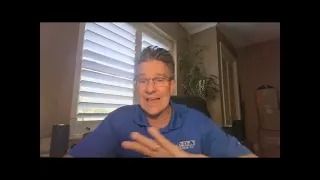Call (727) 784-5555
Home equity levels among homeowners aged 62 and older are at record levels following the end of the pandemic. As a result, reverse mortgages may no longer be considered a “loan of last resort” as financial planners aim to highlight their uses as part of a comprehensive financial plan in retirement.
This is according to a column published this week by Investment News, soliciting input from planner professionals well known to the reverse mortgage business, including Wade Pfau. But other data suggests convincing borrowers of the benefits remains very challenging.
Reverse mortgage use as part of a broader financial plan “is really the intention in the financial planning space,” Pfau told the outlet. While reverse mortgage customers benefit greatly from low rates, the current high-rate environment doesn’t fully cancel out their potential use as a planning tool, he explained.
“It’s all about the sequence-of-returns risk in retirement planning […] Spending from the home equity helps you preserve more investments, so there is going to be a bigger legacy at the end,” Pfau told the outlet. “The beneficiaries can get more. They can pay off the loan and still have a net windfall.”
This perspective is consistent with prior statements Pfau has provided to other outlets, including to RMD.
Other financial planners adjacent to the reverse mortgage space offered their own thoughts, including Steve Resch, vice president of retirement strategies at Finance of America Reverse (FAR).
“The goal is for the client or the family to always retain an equity position in that property. […] Years ago, that wasn’t the case,” Resch said in the story, describing the housing crisis of 2008 as a “reckoning” for the reverse mortgage industry as well as the larger housing ecosystem.
Resch explained that the ballooning length of retirement in America contributes to the potential utility of a reverse mortgage for qualifying borrowers.
“It’s simply a matter of demographics,” he told Investment News. “We have an enormous population that is moving into retirement. We’ve got a massive amount of equity available. We’re looking at 20- to 30-year retirements. Bringing home equity into that plan really makes sense.”
Another financial planner, Gateway Wealth Management founder David Foster, cited Pfau’s work in particular as helping to bring him around on the product category as a planning tool for clients, but convincing them to take a closer look at a reverse mortgage remains a major challenge.
“I think reverse mortgages might be the single most underutilized retirement planning tool,” he told the outlet. “I have found it extremely difficult to have a rational conversation with my clients about reverse mortgages. Most people who’ve paid off their house just cannot fathom the idea of going back into debt.
“No amount of logic will be able to convince them that it is wise to borrow against their house in retirement after having worked so hard to pay off their home prior to retirement,” Foster added. “I’ve even had people get borderline angry with me for even suggesting the idea.”
Last year, Mutual of Omaha Mortgage released survey data suggesting that education hurdles remain very steep for the reverse mortgage industry when aiming to connect with a variety of different borrowers on multiple potential use cases.
Have A Question?
Use the form below and we will give your our expert answers!
Reverse Mortgage Ask A Question
We will get back to you as soon as possible.
Please try again later.
Start Your Loan
with DDA todayYour local Mortgage Broker
Mortgage Broker Largo See our Reviews
Looking for more details? Listen to our extended podcast!
Check out our other helpful videos to learn more about credit and residential mortgages.





